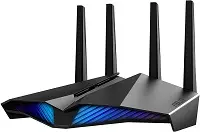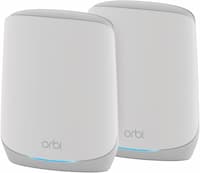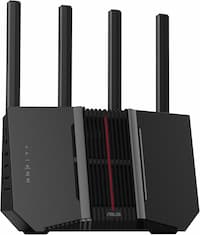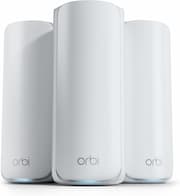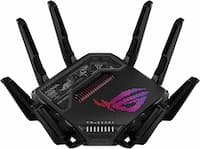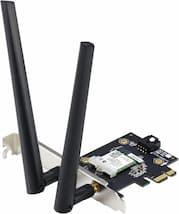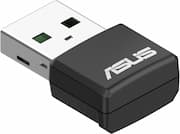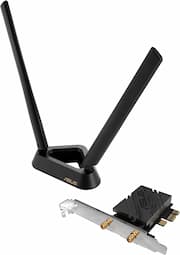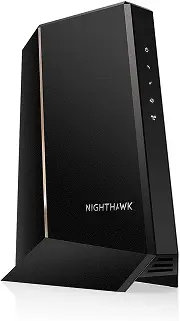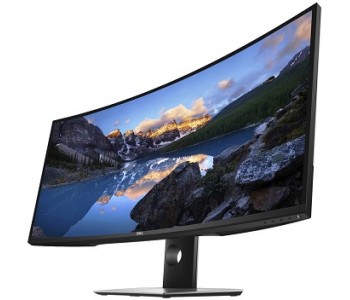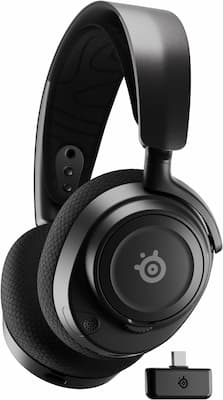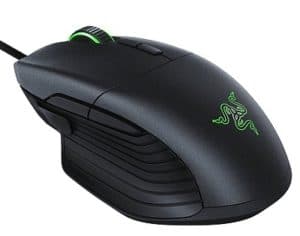The Best Wireless Networking Buyer’s Guide – Summer 2025
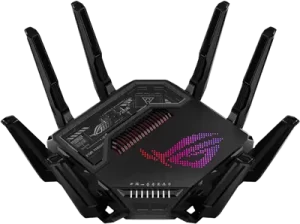 Wi-Upgrade Wi-Fi?
Wi-Upgrade Wi-Fi?
With so many devices relying on wireless networking these days, having an up-to-date home network is a must. That’s because many previous-gen routers simply aren’t up to the task of supporting multiple high-speed devices. While it may be tempting to leave well enough alone once a network is up and running, a lot has changed in terms of broadband service and home WiFi demands over the past few years.
Simply put, if you have high-bandwidth requirements, such as 4K streaming, video conferencing, or game streaming, it’s probably time for an upgrade. The same is true if you have multiple smart devices in the home, such as smart speakers or a security system. In short, there’s plenty of new networking technology to take advantage of, and it will be put to good use in the modern home environment.
What’s With All the WiFi Standards?
For the Summer 2025 edition of this guide, we list products from two just generations to make your decision simpler: 802.11ax (WiFi 6) and 802.11be (WiFi 7). We have dropped both 802.11ac (WiFi 5) and 802.11axe (WiFi 6E), for reasons we’ll explain below. For most users, 802.11ax is the great mainstream choice. It was the first to be given a friendlier name, specifically WiFi 6, with a later iteration was called 802.11axe/WiFi 6E. The simplified numerical branding was intended to help consumers know what they were getting (and WiFi 5 was retroactively applied to older 11ac products, which still exist, but at over a decade old, is best left to history). The thought was that consumers couldn’t keep track of whether 802.11n, 802.11ac, 802.11ax was faster (although 802.11ax certainly sounded cooler!). In case you’re wondering, the mid-generation WiFi 6E unlocked extra performance by using the 6GHz band (all previous WiFi standards used 2.4GHz or 5GHz). It’s a bit confusing that WiFi 6 doesn’t use 6GHz and only WiFi 6E does, but in truth 6E wasn’t fully embraced by manufacturers, and we never recommended it, so it’s best ignored!
Moving on, if you want cutting-edge speed, you go next-gen: 802.11be/WiFi 7. It adds the 320MHz channel on top of the existing 6GHz band from WiFi 6E, allowing it to make better use of 6GHz than 6E ever did. Just how fast is it, you ask? Well, while 6E topped out at 4800Mbps, 7 can hit 11500Mbps, or nearly 2.5x faster. That is simply mind-blowing, and you know you want it. But… be forewarned: WiFi 7 is strictly for early adopters, given the cost and the fact that very few client devices (i.e., your wireless gear) use WiFi 7. But if building a network for the future is your goal, WiFi 7 is what you need.
Speaking of client devices, if you’re a desktop PC user as many of our readers are, you have the option of upgrading your WiFi, including to WiFi 6 or even 7 with a PCIe-based adapter, which we list in this guide. There’s now even a USB option for WiFi 7, new to the guide since our last update, which means you can upgrade older laptops, although it is a bit bulky. You can learn more later in this guide.
An important change for our latest guide is the removal of all TP-Link products from our website, likely forever. We occasionally “ban” certain brands from our guides for all sorts of anti-consumer behavior (like HP from our Printer Guide for disabling printers when used with generic ink), but the removal of TP-Link is for even more serious reasons. The latest intelligence suggests that TP-Link flooded the US and other markets with WiFi products that seriously-undercut competitors as part of what may have been a coordinated hacking scheme sponsored by the Chinese government. While this is hard to prove, we are extremely well aware of just how much cheaper TP-Link’s products were than every other brand – that’s why they were in our guides for years. The fact that TP-Link, the only Chinese-owned major networking brand (others are American or Taiwanese), might have sold products at a loss for nefarious reasons is not beyond the realm of possibility. For this reason, we won’t put our readers at risk any longer.
One last thing: you’ll need fast Internet service to take advantage of the speed of any of the offerings in our guide, and that means cable or fiberoptic. The latter always has proprietary modems, but for cable you can buy your own cable modem, and we offer our recommendation in this guide, getting you out of paying monthly rental fees, while getting you into true Gigabit broadband service!
What If I’m Tired of Dropping the Signal Across My Home?
 If you have a medium to larger home (say, over 2000 sq. ft.), speed ratings won’t tell you all you need to know about network performance. This is when it’s time to think beyond a single router (or node) sitting on one side of your house, and move to multi-node “mesh” network!
If you have a medium to larger home (say, over 2000 sq. ft.), speed ratings won’t tell you all you need to know about network performance. This is when it’s time to think beyond a single router (or node) sitting on one side of your house, and move to multi-node “mesh” network!
A system like the Netgear Orbi pictured here will fill those dead spots faster than you can say “where’s my signal?!?” With that said, gamers and streamers living in apartments and small homes should probably go with a single high-powered router at the same pricepoint. You get more straight-line speed at the expense of range. And anyone who wants the best of all worlds can actually pair two Asus-branded routers using the innovative Asus AIMesh system to create a truly out-of-this-world mesh network that has extreme speed and extreme range!
One last thing: we utilize Amazon links throughout this guide, and your use of these links helps support future development of the guide!
Routers
-
The High-End 802.11ax Router –
Asus RT-AX82U AX5400
$140The Guru’s TipNo, it’s not cheap, but honestly, given the performance the Asus RT-AX82U provides versus previous-gen routers, it’s an absolute bargain. With maximum speeds of 4800Mbps on the 5GHz band and 575Mbps on the 2.4GHz band, it is the real deal. It even allows you to extend your network with a true Asus-based mesh system should you need more range! Just make sure you have at least one 11ax device to take advantage of its speed.This is a fantastic pick for an apartment of a smaller home, and will have amazing performance over shorter distances. For larger homes, we suggest either pairing two of these up with the Asus AI Mesh system, or going with the pre-configured mesh system below. Adding the second node doesn't technically add speed, but it dramatically increases range, making devices further away from the main router get faster service.
-
The Mainstream Mesh System –
Netgear Orbi RBK752P
$300The Guru’s TipBack in 2016, a few small players entered the WiFi market with a unique solution: bundling multiple routers into a single, sleek package, branded as “wireless mesh networking.” But those early devices were rough around the edges, being hard to set up and somewhat unreliable. Wow, how far we’ve come, and Netgear is the undisputed leader in mesh systems. This model will provide access across your entire home (2 nodes are good enough for 5000 sq. ft an 75 devices). And thanks to its use of WiFi 6 (802.11ax), it can provide speeds of up to 5200Mbps to the latest devices.A lot of readers have asked us over the years about WiFi extenders, and whether mesh is the same thing. It most definitely is not, and at this point we no longer recommend extenders, which provided more range at the expense of vastly-reduced performance. If you need more range today, simply replace your old router with a new mesh system like this one.
-
The High-End WiFi 7 Router –
Asus RT-BE92U BE9700
$250The Guru’s TipNo, it’s not cheap, but honestly, given the performance the Asus RT-BE92U provides versus previous-gen routers, it’s an absolute bargain. With maximum speeds of 5764 Mbps on the 6GHz band, 2882 Mbps on the 5GHz band, and 1032 Mbps on the 2.4GHz band, it’s a huge upgrade over WiFi 6, yet costs less than many of those routers did when they launched. We particularly like that this model is unique among nearly all high-end routers in being vertical, giving it a much smaller footprint then competing models.As with other Asus models, the BE92U allows you to pair additional Asus routers together using the AIMesh system to create a powerful mesh network in your home. They don't even have to be the same model of router, although two BE92U models will work great together!
-
The Ultra-High-End Mesh Network –
Netgear Orbi RBE773
$800The Guru’s TipWhat if you want high speed, fantastic range, extra features, and the simplest setup?!? Then you get the Orbi RBE773 from Netgear. It offers WiFi 7 technology with speeds of up to 11,000Mbps, rated up to an area of 8,000 sq ft and 100 simultaneous device connections.This is a massive step up from WiFi 6 mesh offerings, but if you want a mesh system that maxes out the WiFi 7 spec, instead of going with a pre-packaged kit from Netgear or any other company, we suggest you use two of the routers listed below.
-
The Extreme WiFi 7 Router –
Asus ROG Rapture GT-BE98 Pro
$630The Guru’s TipWith the ROG Rapture BE98 Pro, Asus takes everything that made its previous AXE models great and gives them the WiFi 7 treatment. This is seriously the ultimate router! It offers a shocking 30Gbps of total wireless bandwidth, including a 5GHz radio at up to 5764 Mbps and dual 6GHz radios pumping out 11529 Mbps each. It’s those 6GHz radios that really tap into the power of WiFi 7, and to be honest, drive up the cost as well – this router is not cheap, but it cannot be compared to WiFi 7 models that cost half as much, because they don’t have 6GHz radios and therefore do not provide the full benefit of WiFi 7.So here's the deal: while there are pre-boxed slimline WiFi 7 mesh systems that sell for more than this router, we don't recommend them. If you want the fastest, you have to go big literally and figuratively - pair two of these beasts up with Asus AIMesh, and run the fastest mesh network on the planet!
Adapters
-
The WiFi 6/Bluetooth PCIe Card –
ASUS AX1800 PCIe WiFi Adapter
$30 The Guru’s TipBy adding Bluetooth capability to this card, TP-Link has made it a true 2-in-1 solution!
-
The WiFi6 USB Adapter –
Asus AX55 USB Adapter
$35 The Guru’s TipWe've found that wireless adapters that use only internal antennas typically don't have quite the same range as adapters with external antennas, but they're much more convenient to use with a laptop. Also, anything stuck on USB 2.0 will actually be a bottleneck to the average home wireless system, so be careful about off-brand options.
-
The WiFi 7/Bluetooth PCIe Card –
Asus PCE-BE92BT
$90 The Guru’s TipIf you have the extra cash to spare, we definitely suggest you go with this option over the AX-based options above for the sake of future-proofing!
-
The WiFi7 USB Adapter –
ASUS ROG USB-BE92
$100 The Guru’s TipIt's no mean feat to pack this much speed into a compact adapter, so don't trust off brands to get the job done.
-
Cable Modem –
Netgear Nighthawk CM3000 Cable Modem
$270 The Guru’s TipKeep in mind that this is just for cable service - if you're using an alternate technology for ultra-high speed Internet, like fiberoptic, you'll likely need to go with the modem bundled by your provider.
Routers

